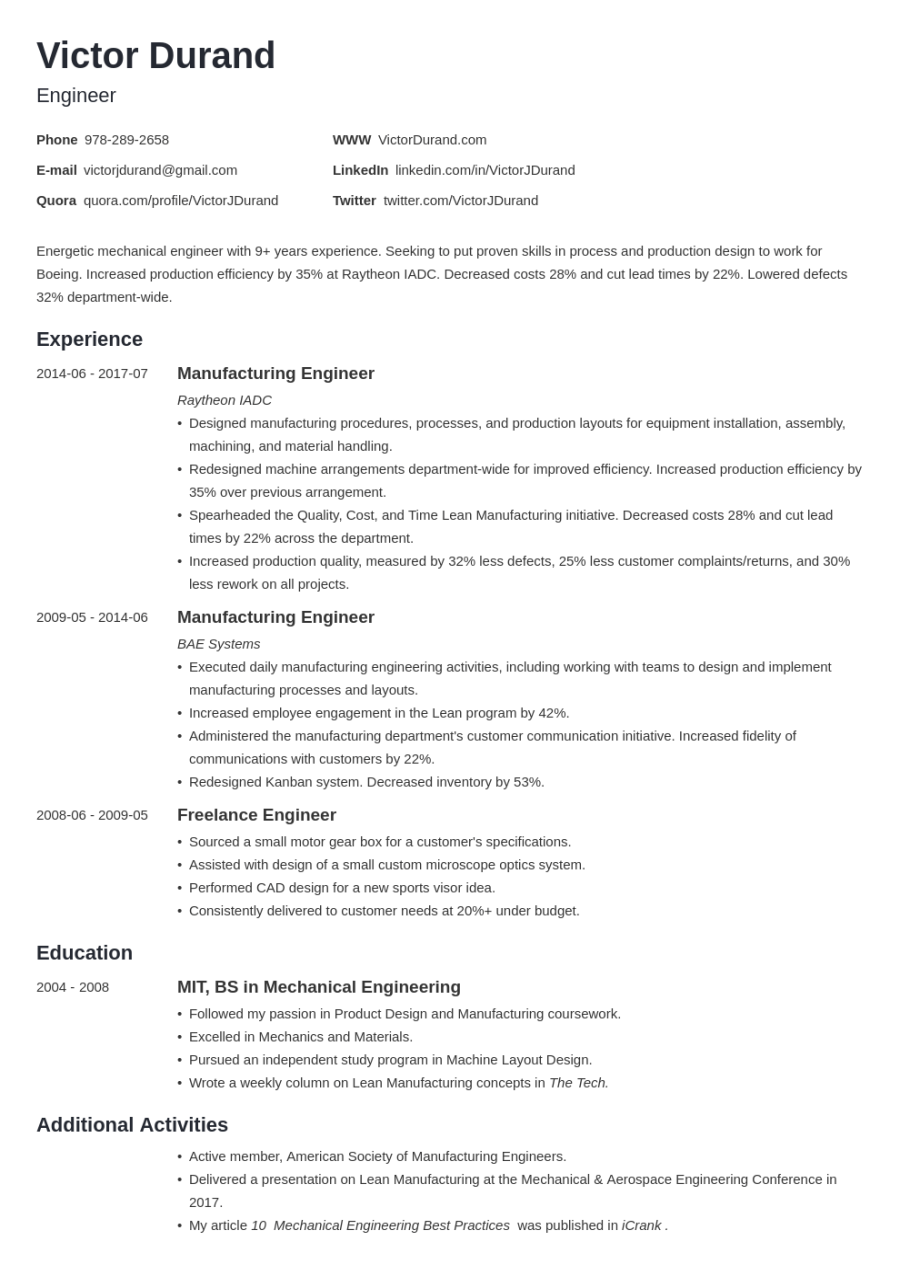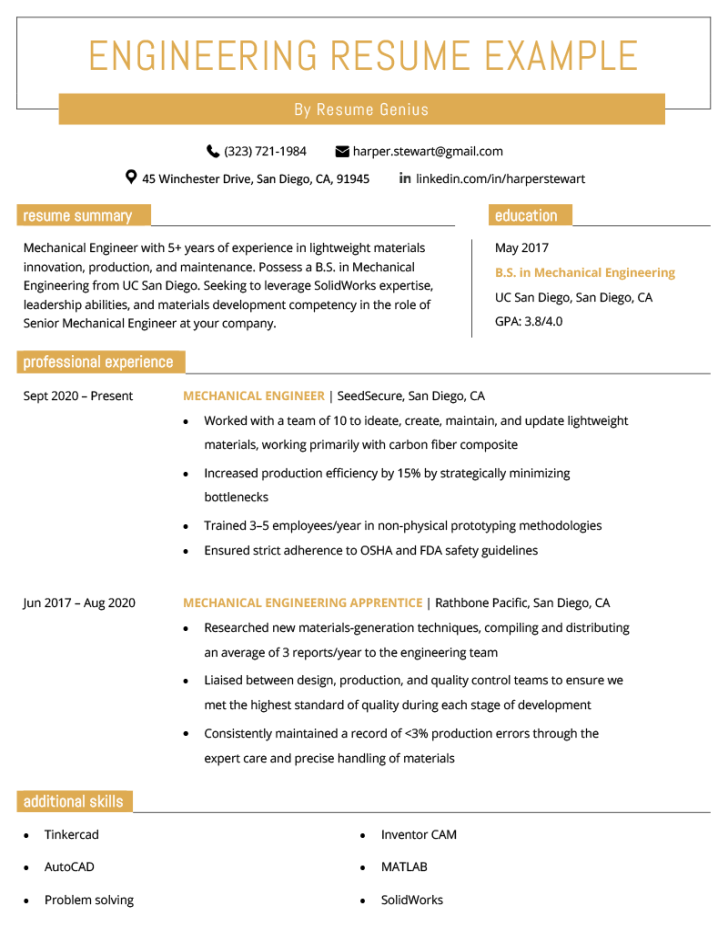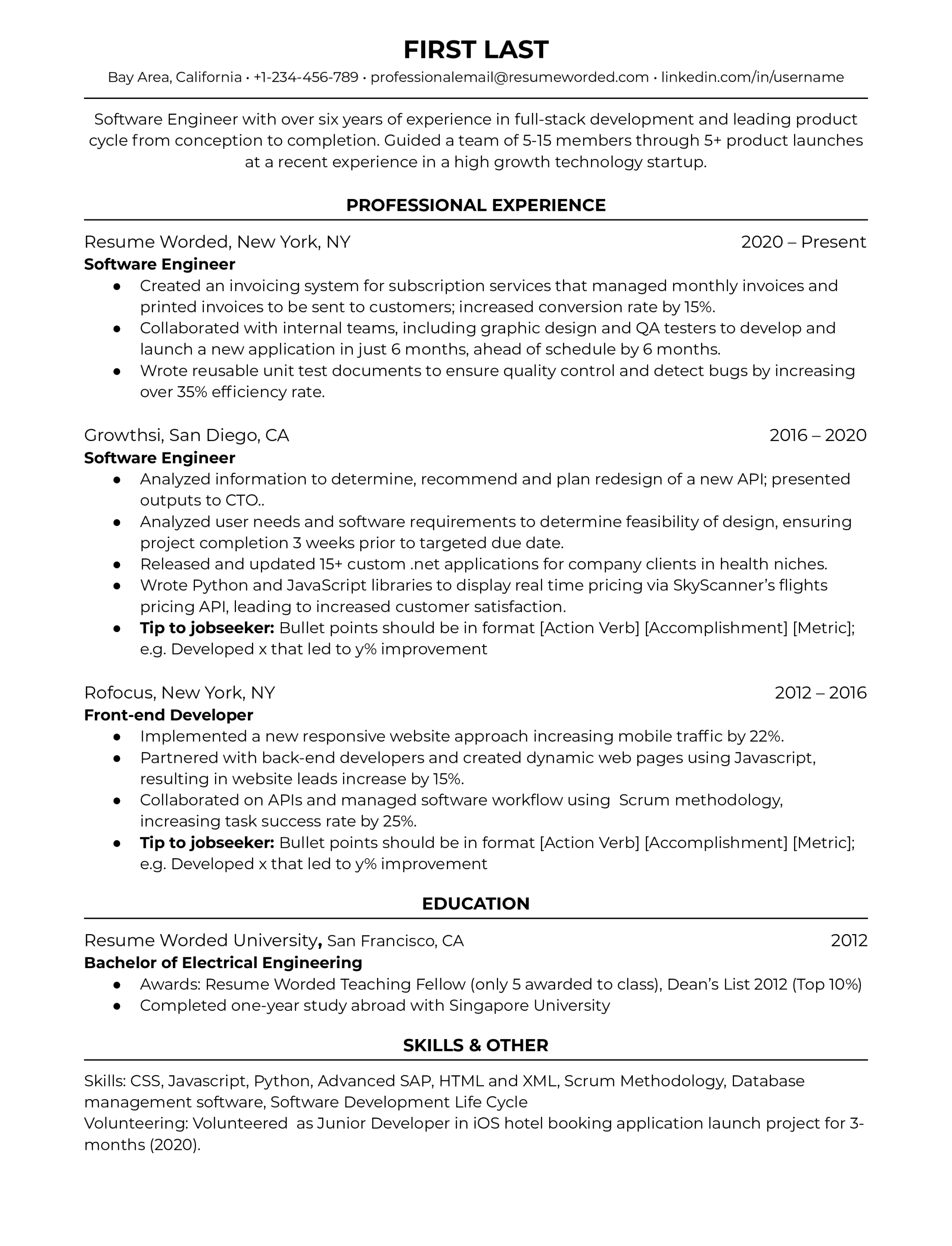Resume Layout Engineer: Crafting the Perfect Resume for Engineering Professionals
Introduction
When it comes to landing a dream job in the engineering industry, a well-crafted resume can make all the difference. As an engineer, your resume serves as a reflection of your skills, experience, and qualifications. To stand out from the competition, it is crucial to create a resume layout that effectively highlights your strengths and showcases your engineering expertise. In this article, we will explore what a resume layout engineer means, how to design one, and the key elements known for creating an impactful engineering resume layout.
What is a Resume Layout Engineer?

A resume layout engineer refers to the design and formatting of a resume specifically tailored for engineering professionals. It involves organizing and presenting information in a way that effectively communicates your engineering skills, experience, and achievements to potential employers. A well-designed engineering resume layout is visually appealing, easy to navigate, and strategically highlights your qualifications to catch the attention of hiring managers.
How to Create an Effective Resume Layout?

Designing an effective resume layout requires careful consideration of various elements such as formatting, sections, and content placement. Here are some essential steps to follow when creating a resume layout engineer:
1. Choose the Right Format

There are three common resume formats: chronological, functional, and combination. For engineering professionals, the chronological format is often the most suitable, as it emphasizes your work history and progression in the field. It showcases your experience and achievements in reverse chronological order, starting with the most recent position.
2. Include Relevant Sections
Ensure that your engineering resume includes the essential sections, such as a professional summary, work experience, education, technical skills, certifications, and any relevant projects or research. These sections provide a comprehensive overview of your qualifications and help recruiters understand your engineering expertise.
3. Emphasize Technical Skills
As an engineer, technical skills are of utmost importance. Highlight your technical proficiency in areas such as programming languages, software tools, project management, and any other relevant engineering skills. Consider using a separate skills section or integrating them into your work experience bullet points.
4. Utilize Bullet Points
Make your resume easy to read and scan by using bullet points to list your achievements, responsibilities, and projects. This format allows hiring managers to quickly grasp your key contributions and areas of expertise. Start each bullet point with a strong action verb and quantify your achievements whenever possible.
5. Optimize for Applicant Tracking Systems (ATS)
In today’s digital age, many companies use applicant tracking systems to streamline their hiring process. To ensure your resume gets past the initial screening, incorporate relevant keywords from the job description into your resume. This will increase the chances of your resume being selected by the ATS and reaching the hands of hiring managers.
What is Known for Creating an Impactful Engineering Resume Layout?
Creating an impactful engineering resume layout involves incorporating certain key elements that are known to resonate with hiring managers in the industry. Here are some factors to consider:
1. Clean and Professional Design
Avoid overly elaborate designs and stick to a clean, professional layout. Use a legible font, appropriate spacing, and consistent formatting to ensure readability. Your resume should look polished and well-organized.
2. Relevant and Concise Content
Focus on including relevant information that directly relates to the engineering positions you are targeting. Be concise and avoid unnecessary details. Keep your resume length to a maximum of two pages, unless you have extensive experience or specific requirements from the job posting demand it.
3. Showcasing Achievements and Impact
Showcase your accomplishments and the impact you have made in your previous roles. Highlight any projects you have worked on, improvements you have implemented, and results you have achieved. This helps demonstrate the value you can bring to potential employers.
4. Tailoring for Each Position
Customize your resume for each position you apply for. Analyze the job description and align your qualifications and skills with the specific requirements of the role. This demonstrates your attentiveness and dedication to the job application process.
5. Consistency and Attention to Detail
Ensure consistency in formatting, font styles, and bullet point usage throughout your resume. Pay attention to grammar, spelling, and punctuation to avoid any errors. A well-presented and error-free resume reflects your professionalism and attention to detail as an engineer.
Solution: Resume Layout Engineer Templates
Designing an effective engineering resume layout from scratch can be a daunting task. However, there are numerous resume templates available specifically tailored for engineering professionals. These templates provide a pre-defined layout and format, allowing you to focus on the content and customization. By utilizing these templates, you can save time and ensure that your resume follows industry best practices.
Conclusion
In the competitive job market, an impressive resume layout engineer is crucial for engineering professionals to showcase their qualifications and land their dream job. By following the steps outlined in this article and incorporating the key elements known for creating impactful engineering resumes, you can craft a compelling document that stands out to potential employers. Remember to customize your resume for each position, utilize resume templates for efficiency, and pay attention to consistency and attention to detail. With these strategies, you will be well on your way to a successful engineering career.
FAQs (Frequently Asked Questions)
1. How long should an engineering resume be?
An engineering resume should ideally be one to two pages long, unless you have extensive experience or specific job requirements demand additional space. Keep it concise and focus on showcasing your most relevant qualifications and achievements.
2. Should I include a photo in my engineering resume?
In most cases, it is not necessary to include a photo in your engineering resume unless specifically requested by the job posting or if you are applying for an international position where cultural norms might differ. Focus on highlighting your qualifications and skills instead.
3. Can I use a non-traditional resume format for engineering positions?
While it’s essential to stand out, using a non-traditional resume format for engineering positions might not be the best approach. Stick to a chronological format that emphasizes your work history and progression in the field, as it is widely recognized and preferred by employers in the engineering industry.
4. Is it necessary to include a cover letter with my engineering resume?
Although not always required, including a cover letter with your engineering resume can enhance your application. A cover letter provides an opportunity to introduce yourself, explain your interest in the position, and highlight specific qualifications or experiences that make you a strong fit.
5. How often should I update my engineering resume?
It is recommended to update your engineering resume regularly, especially when you acquire new skills, certifications, or complete significant projects. Additionally, update your resume whenever you apply for a new job to tailor it to the specific requirements of the position.